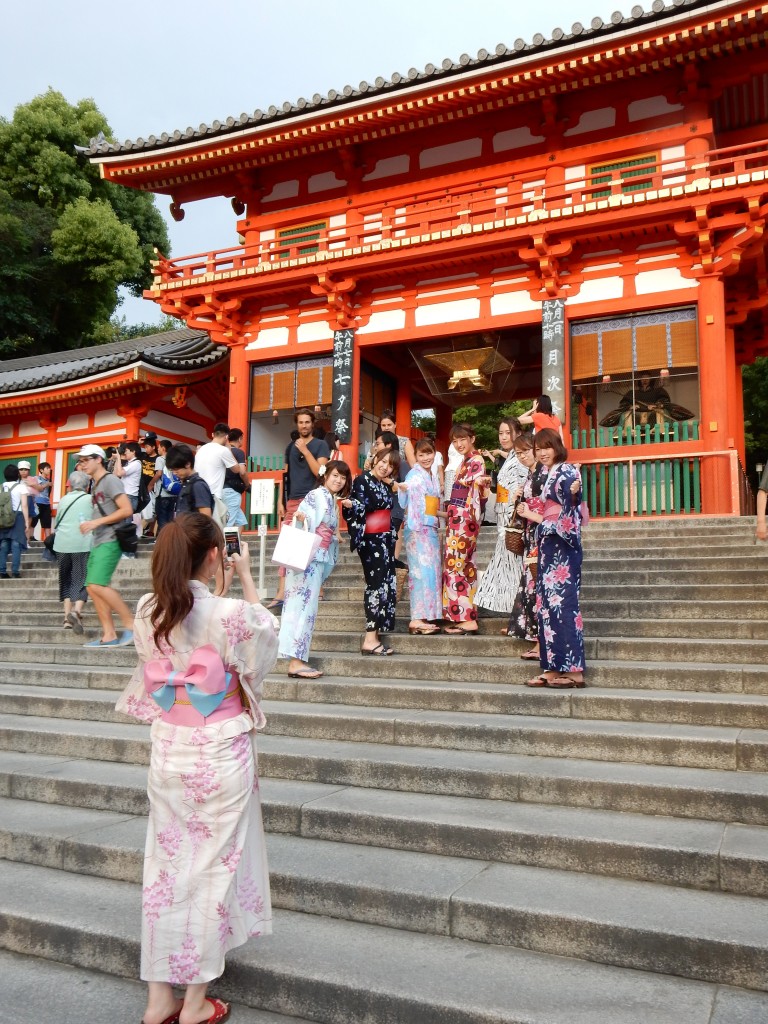
The west entrance gate (Nishi Romon) is always a popular photo spot. It faces onto the Gion geisha area, and in former times the temple complex that stood here was famous for its bell mentioned at the beginning of The Tale of Heike
Yesterday marked the official end of the month-long Gion Festival, with a purification ritual at Yasaka Jinja involving a chinowa (large ring of cogon grass), to complete the circle as it were. Unfortunately I arrived in the cool of the evening, too late to participate (the chinowa was up from 10.00 am to 3.00 pm). Nonetheless Yasaka Shrine is always worth a visit and there was plenty to catch the eye. (For a full account of the shrine, see Cali and Dougill’s Shinto Shrines, p.143-7.)
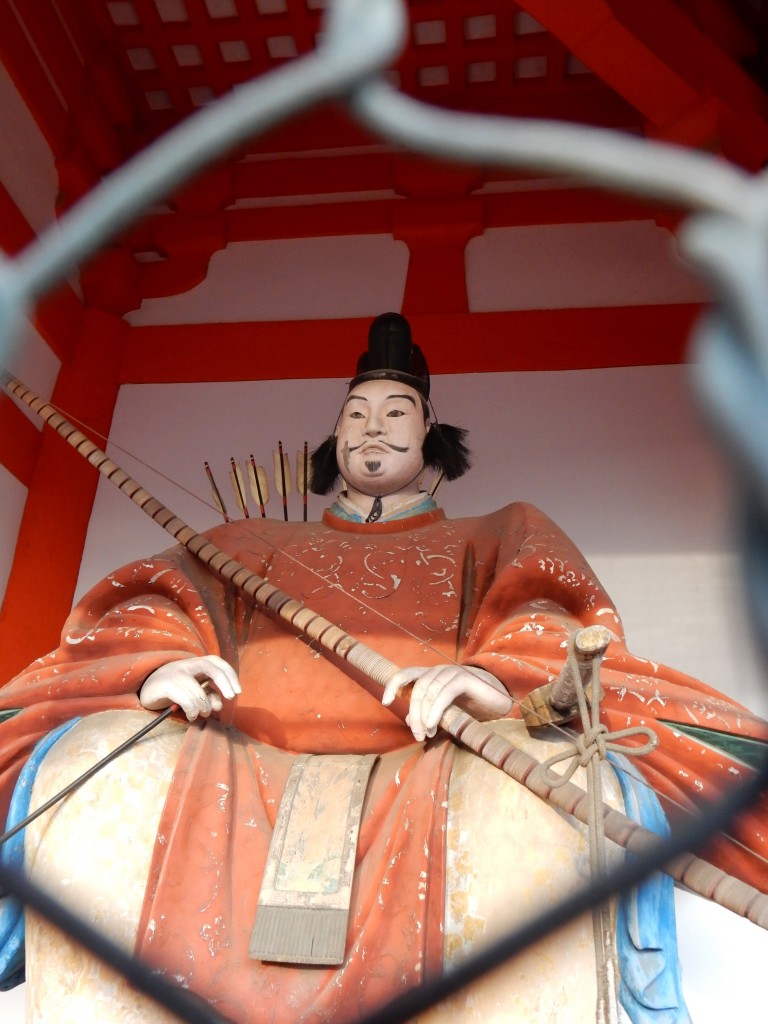
One of the guardian archers in the West Gate, known in Japanese as 'zuijin'
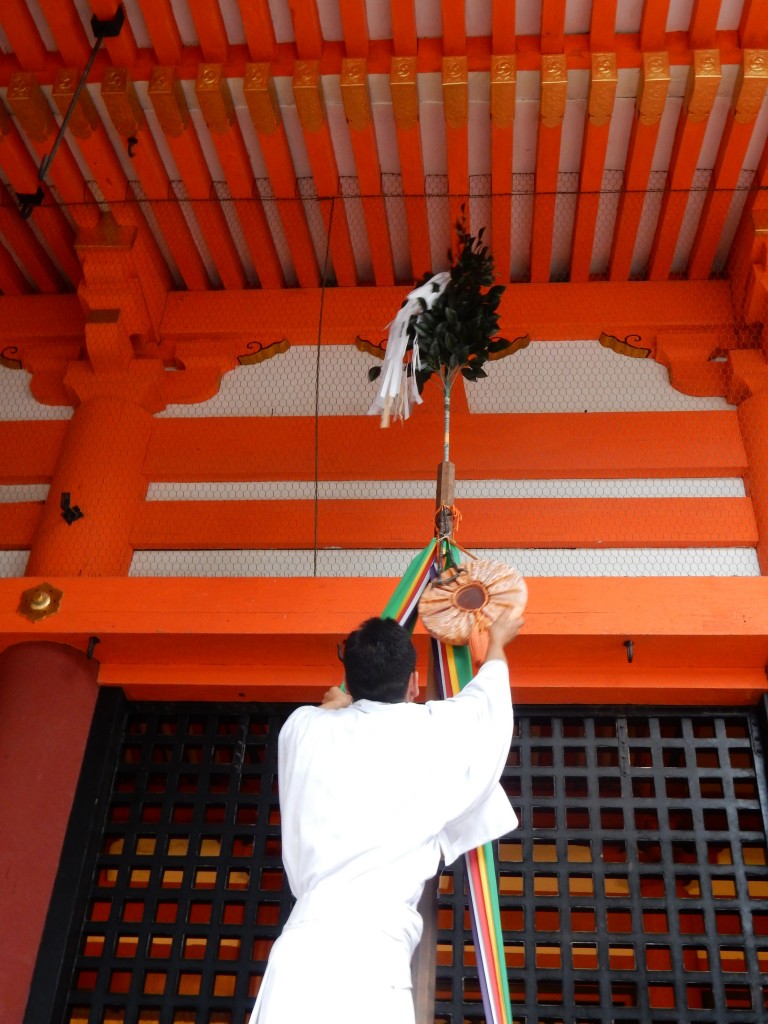
Inside the shrine we talked to a young priest who was fixing the 'masakaki' decorations which stand on either side of the Worship Hall.
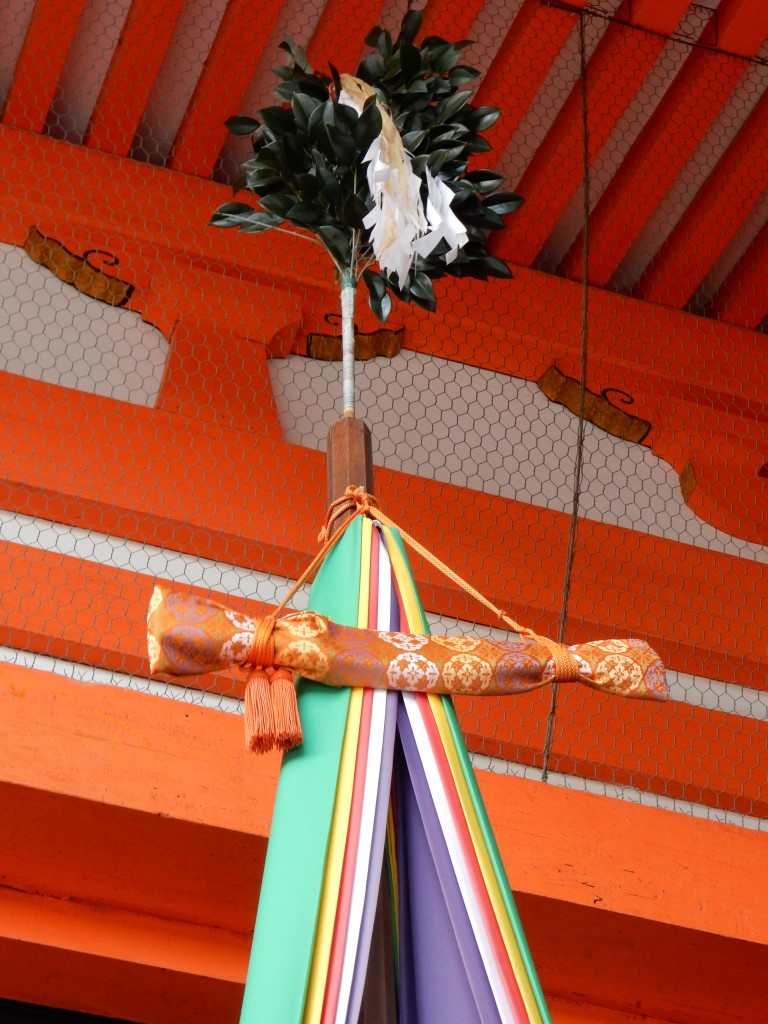
The masakaki on the left-hand side bears a sword, one of the sacred regalia. The cloth is in five colours (five elements?), which is similar to Buddhist usage.
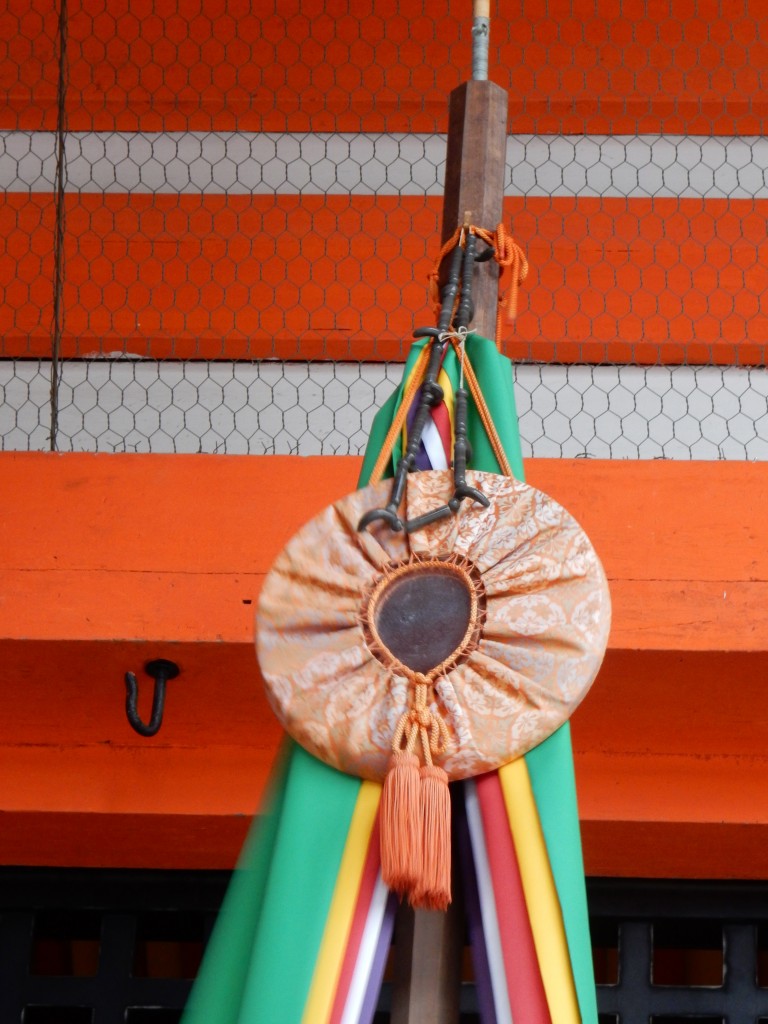
The masakaki to the right bears the other two sacred regalia, namely a mirror and string of magatama beads
I’m indebted to the Rev Barrish for the following information regarding the five colours of the masakaki banner, which has its origins in the decorations of the sakaki tree outside Amaterasu’s Cave: “Black (purple) means North (Ara Mitama), Blue (green) means East (Kushi Mitama), Red means South (Sachi Mitama), White means West (Nigi Mitama), Yellow means the sacred Center (Nao-Hi =sun rays).”
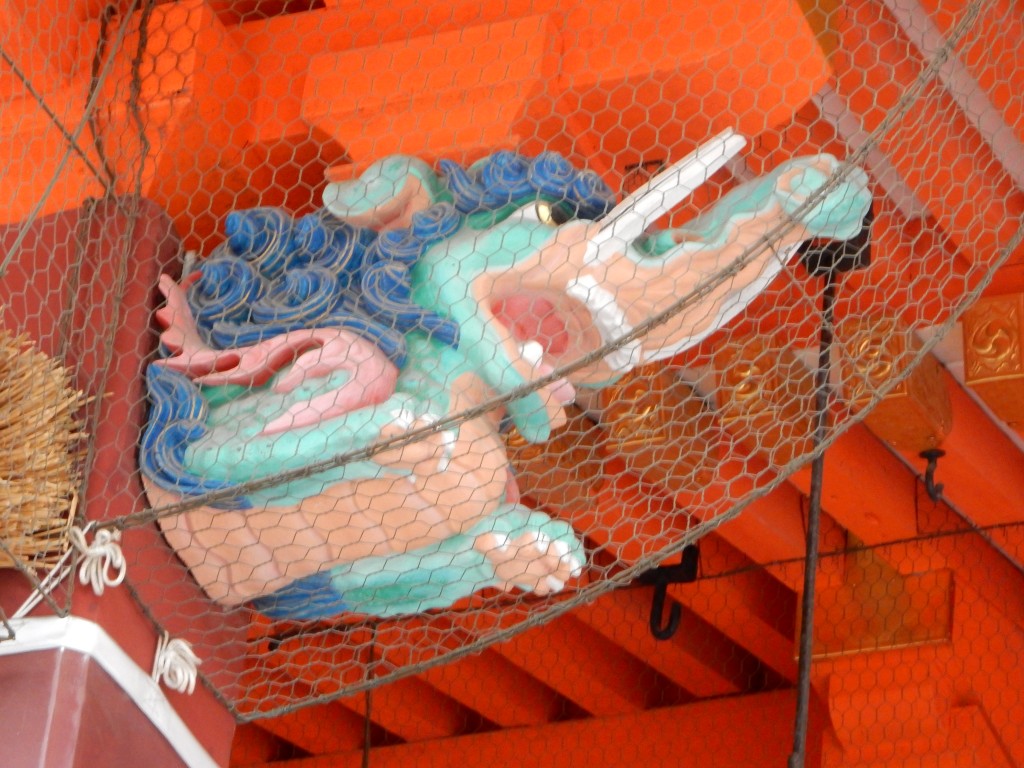
The Haiden boast some bright colours and this mythical creature, known as a 'baku' and said to eat bad dreams
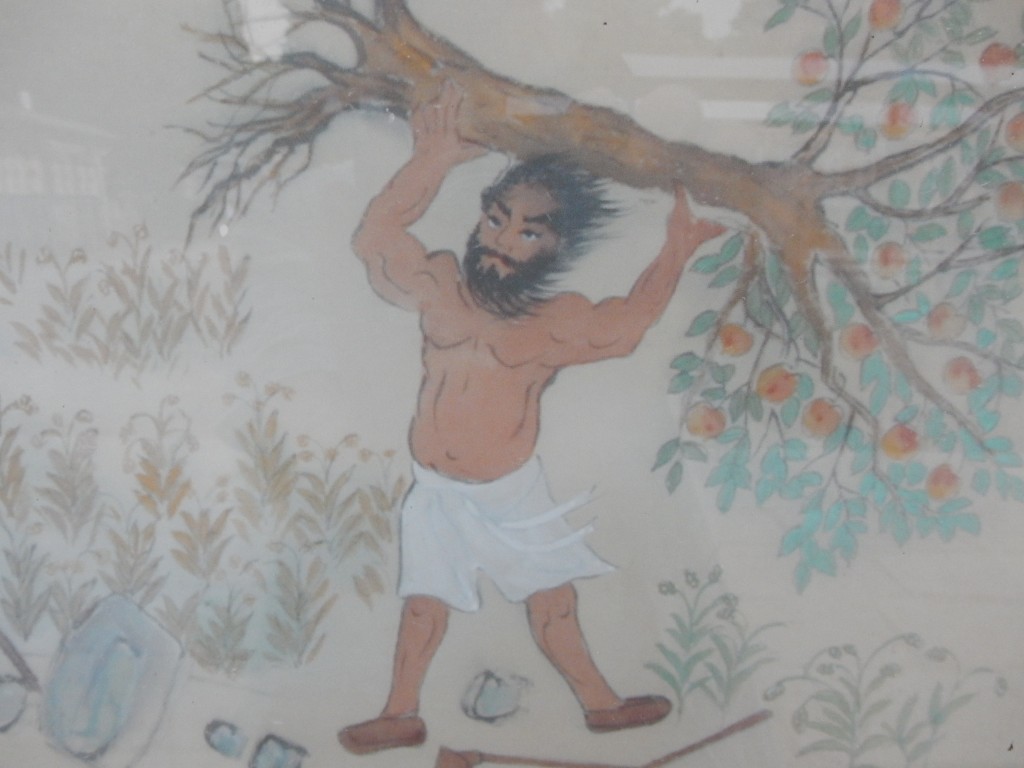
The shrine is dedicated to the storm god Susanoo no mikoto, and there are panels to explain to visitors his significance in mythology where he throws a fit with Amaterasu and tears up the heavenly fields
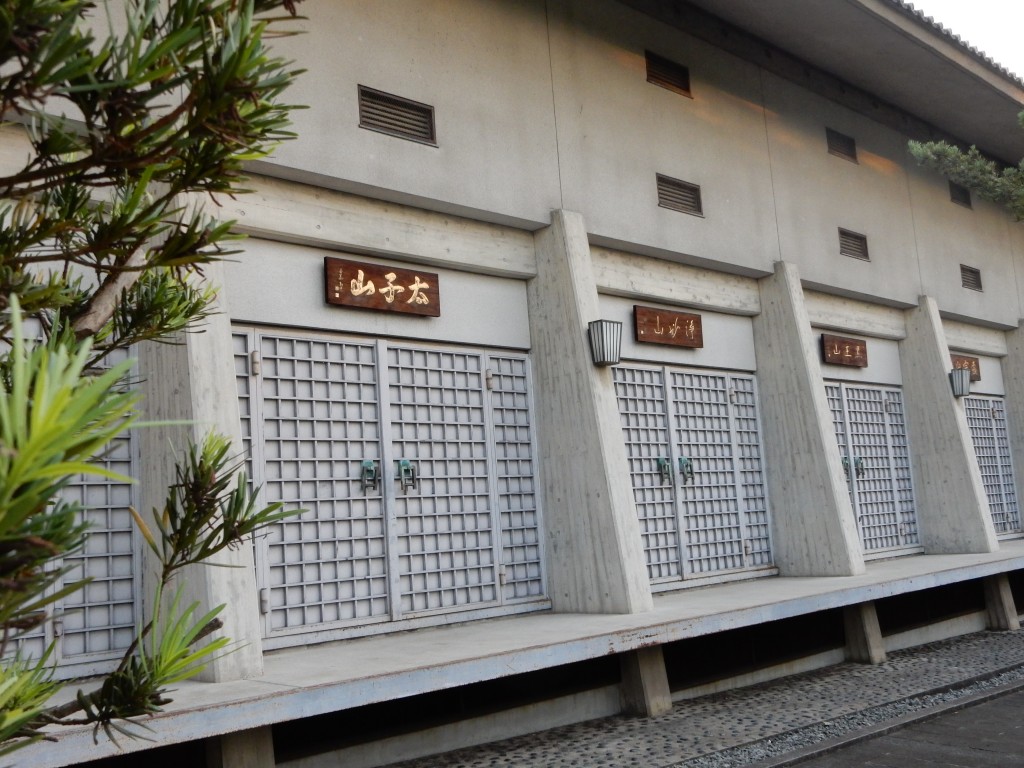
At the back of the shrine is the Yamahoko Hall, where some of the festival floats are stored. It was built in 1968 to house floats which could no longer be stored by their neighbourhoods.
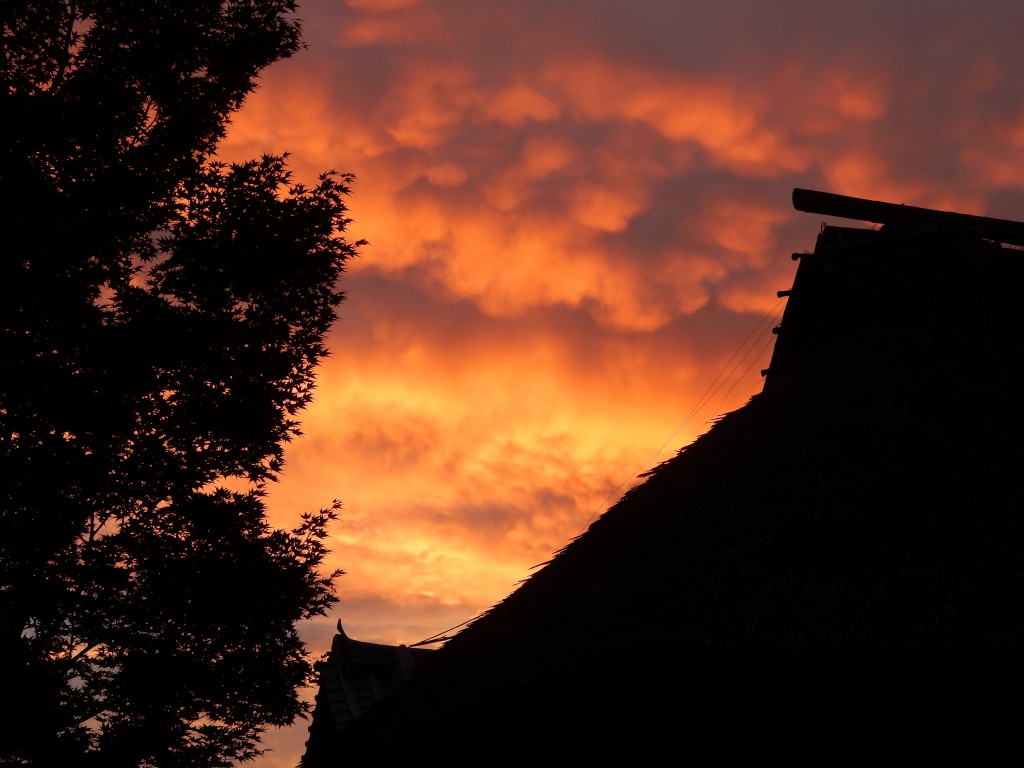
From the south gate of Yasaka Jinja there's a beautiful walk through historic streets, which at sunset are empty of tourists and full of beauty
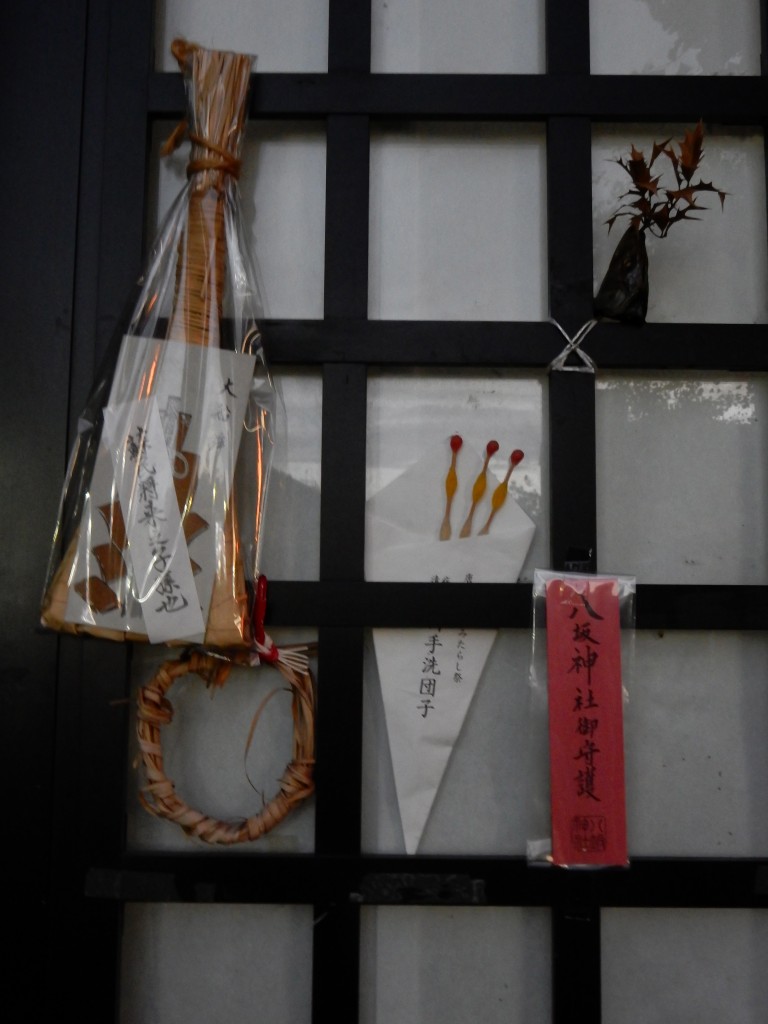
One house we passed had a full collection of Gion Festival amulets and charms
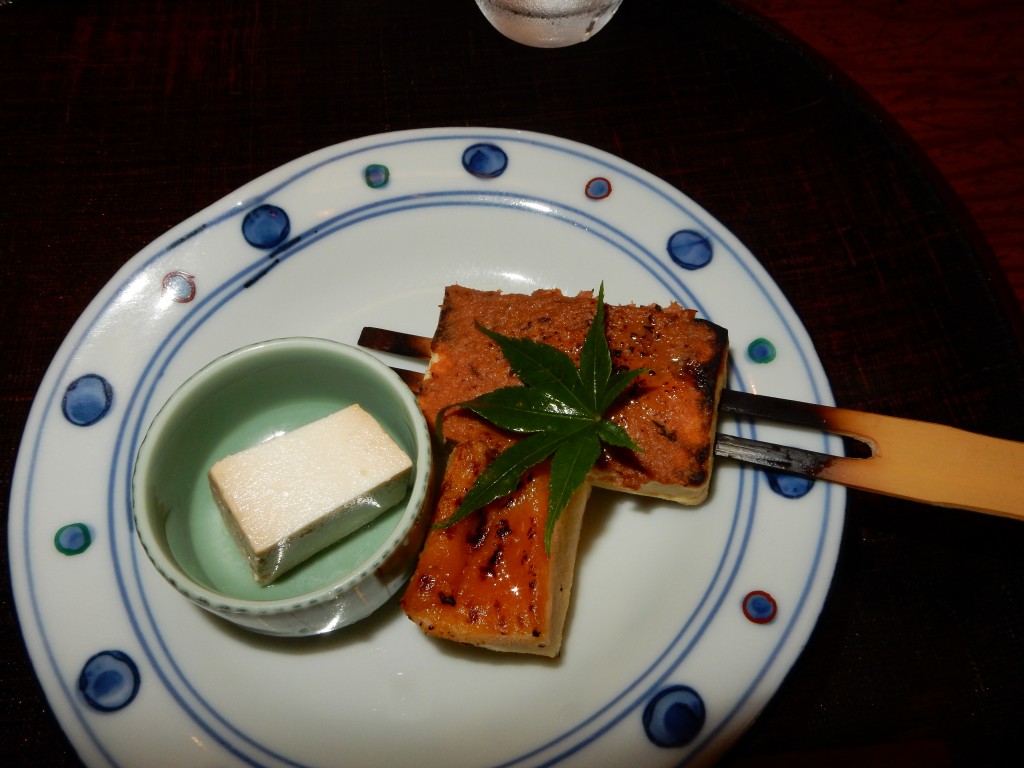
A fine evening was rounded off with a special Kyo-tofu meal that was divinely delicious. I have a theory the aesthetics of the food are linked to the aesthetics of shrine architecture, but more of that another time...

Leave a Reply